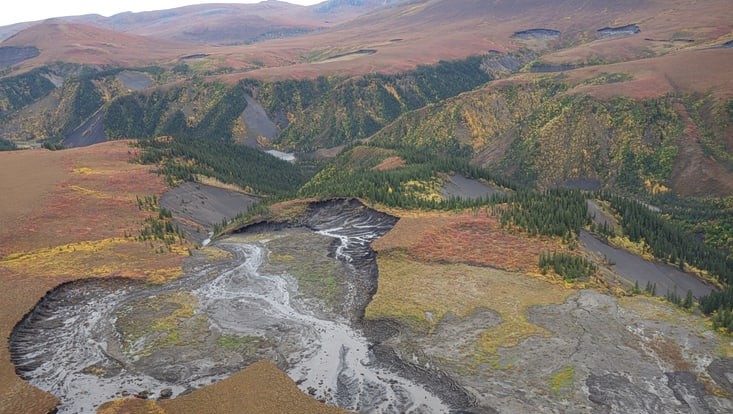Meteor Discovers Leaks in the Ocean Floor
11 November 2021, by Prof. Dr. Christian Hübscher

Photo: C. Rohleder CC BY SA
Prof. Christian Hübscher and a team from Universität Hamburg are on an expedition to the Gotland Basin. From on board the RV Meteor, the experts are assessing whether the CO2 could be safely stored beneath the ocean floor – as the Baltic states plan to do. The team’s preliminary findings indicate that the floor is “leaky.”
As geophysicists conducting research at sea, our work involves material flows between the solid ground at the seafloor and the water column above it. And there’s quite a bit going on there. For one thing, the gases and liquids – which we collectively refer to as “fluids” – rising from the Earth’s crust to the ocean floor, where they are sometimes released, transport nutrients. These nutrients can have major effects on the biosphere in and on the seafloor. But their transport routes also tell us which ground layers are permeable for gases and liquids, and whether the rise and release of these substances are due to tectonic faults.
Many of the substances released are harmful, some even toxic. As such, when our imaging methods detect leaks, chemical analysis can be used subsequently to determine the nature of the substances.
Two weeks ago, on board the research vessel Meteor we began searching for escaping fluids in the Gotland Basin, particularly in the territorial waters of the Baltic states. In the middle of last week, we were able to confirm our hypothesis that there is extensive fluid release in the eastern part of the basin. The liquids and gases are being released by stone formations more than 400 million years old, and wherever they appear on the seafloor, they produce elongated troughs. In simple terms, we could say that the ocean floor, especially near Latvia and Lithuania, is “leaky.”
Our discovery could be extremely relevant for the Baltic states’ plans. As a transitional technology, they plan to pump CO2 below the seafloor of the eastern Gotland Basin to reach their respective climate targets. Whether these plans can be implemented despite the “leaky” seafloor remains to be seen.
About the Expedition
Prof. Christian Hübscher is leading the latest RV Meteor expedition. There are 15 experts from Universität Hamburg’s Geophysics and Geology departments, and one from the University of Warsaw, on board.
That number includes several young researchers: 11 are students, and four are still in their Bachelor’s program. Some of the students have already been on a number of expeditions at sea. Given their experience, they serve as shift leaders, monitoring the data gathering around the clock, despite at times rough seas.
Universität Hamburg currently operates three German research vessels, which are active worldwide. The SONNE and METEOR belong to the Federal Republic of Germany, represented by the Federal Ministry of Education and Research. The MARIA S. MERIAN belongs to the Federal State of Mecklenburg-Vorpommern, represented by its Ministry of Science, Culture, Federal and European Affairs. The German Research Fleet Coordination Centre, part of the University, is responsible for ship operations, and for the scientific-technical, logistical and financial organization of all expeditions.


